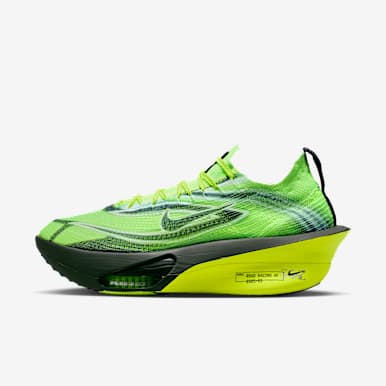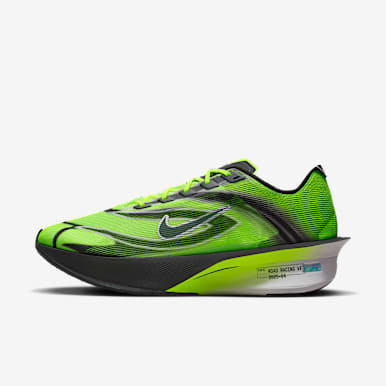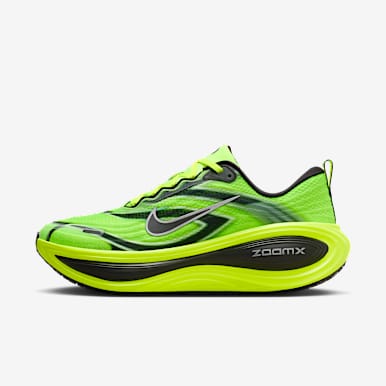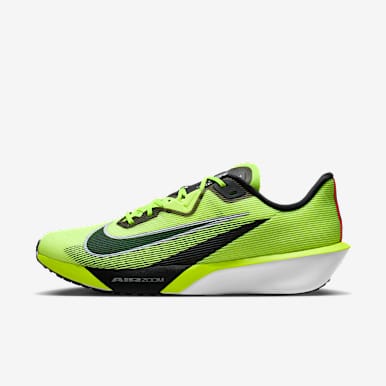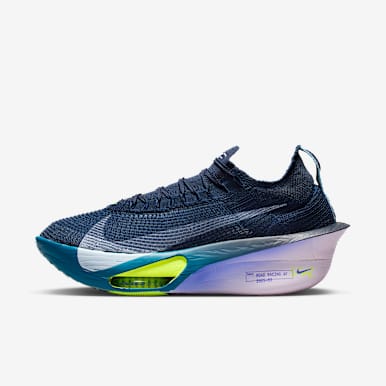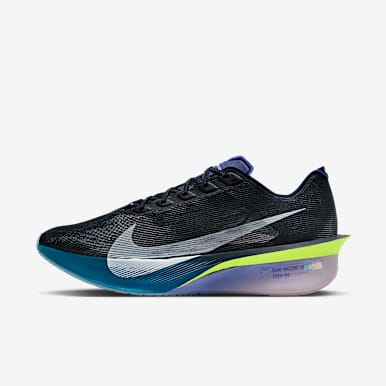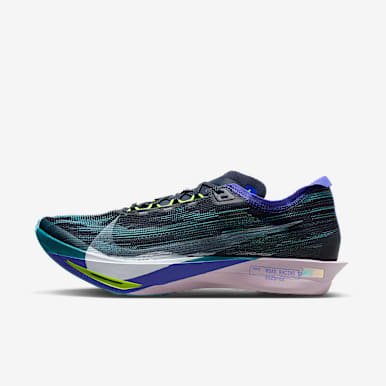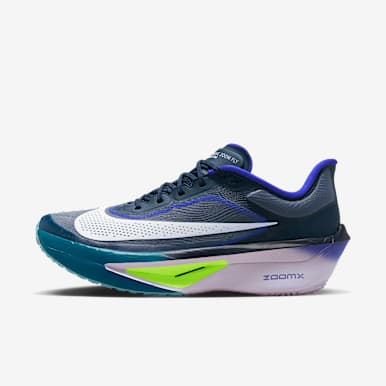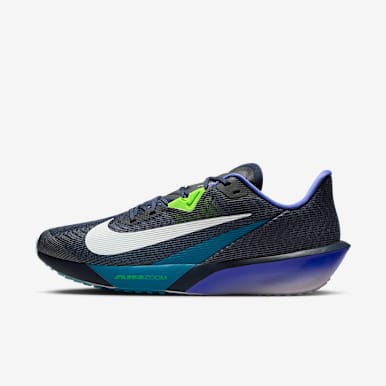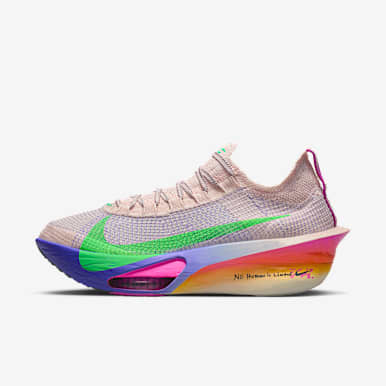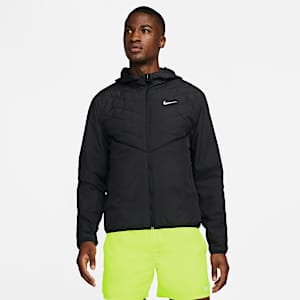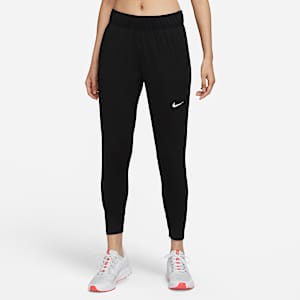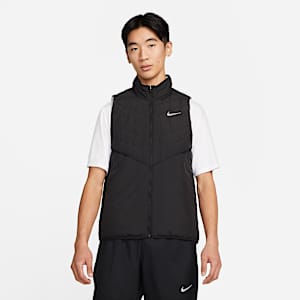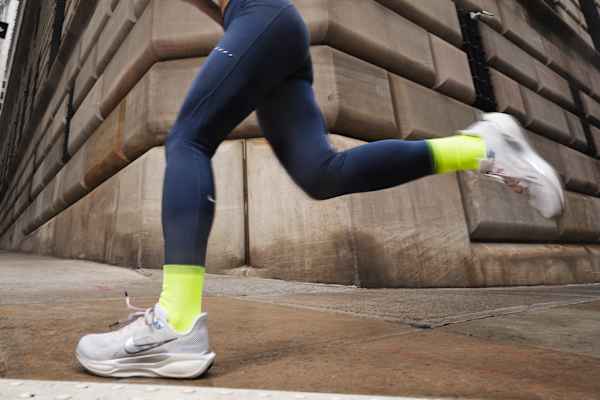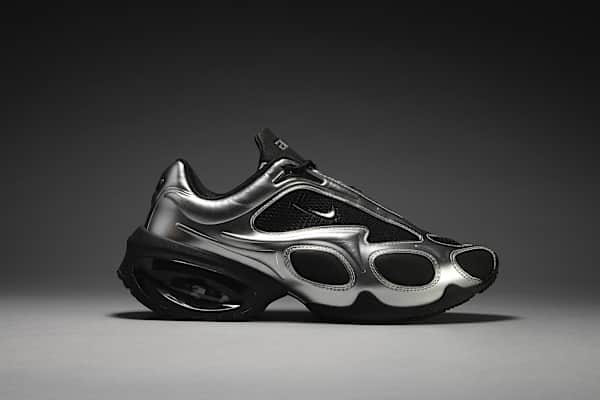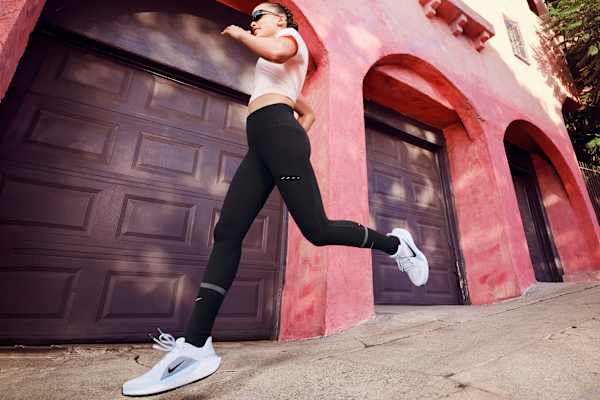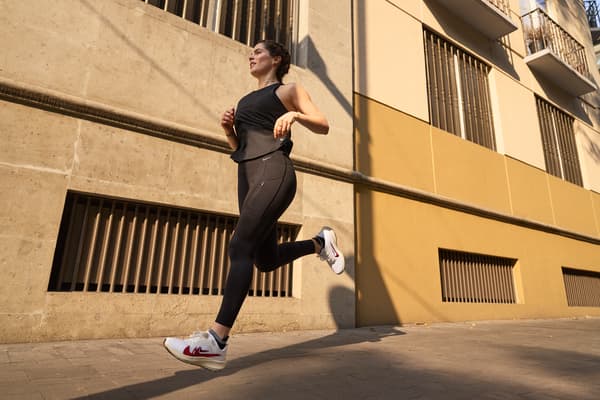No Off-Season: What to Wear for Running in the Cold
Buying Guide
Learn to layer like a pro with winter running gear powered by Nike’s best performance technologies.
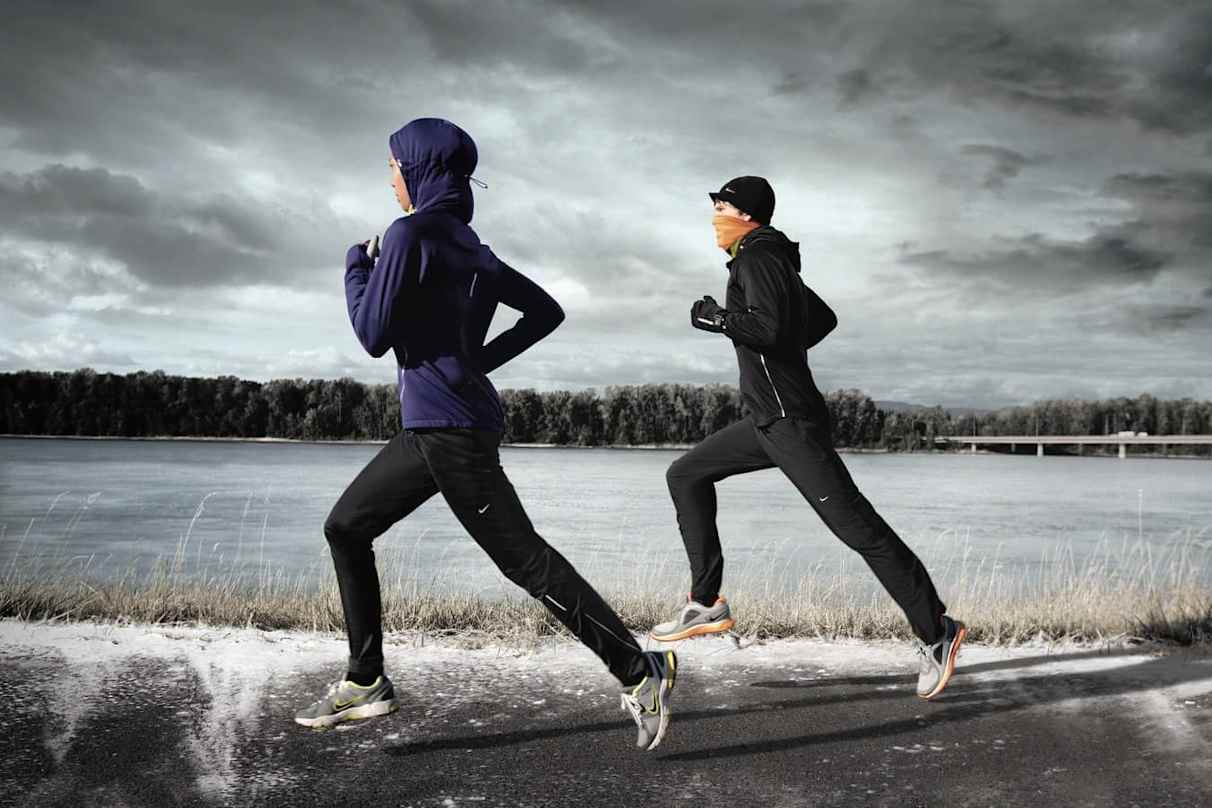
Running in the cold doesn’t have to mean frozen hands or chattering teeth. If you dress in the right layers—and with the right Nike technologies—there’s no such thing as bad weather.
Learning how to layer is the key to running in winter's cold weather without sacrificing comfort. You want to wear pieces that work with your body as it warms up. That means base layers that pull sweat away from your skin for quick evaporation, mid layers that trap heat in and outer layers that shield you from wind, rain and snow. Get it right, and your gear will help you embrace the elements and keep moving, no matter the temperature.
Whether you’re tackling a pre-dawn tempo run or logging miles on the coldest day of the year, the goal is the same: stay warm without overheating. Here’s how to build cold-weather running outfits using some of Nike’s best innovations in performance apparel.
A Sweat-Wicking Base Layer
A base layer is your first defense against the cold. But we’re not looking to add warmth just yet. Instead, think about managing moisture. Designed to be worn next to the skin, these layers use Nike Dri-FIT technology to wick away sweat as you run, helping you avoid the chill of wearing wet clothing in cold temps.
Base Layer Tops
From sleek tanks to slim short-sleeve tees and snug long-sleeve layers, Nike offers a wide variety of tops you can build your cold-weather running outfit around.
For breathability in a lightweight design, consider the Nike Fast Running Singlet or the Nike Running Singlet. Both are sleeveless options designed with Nike Dri-FIT technology and soft, distraction-free materials. The snug Nike Pro Sleeveless Top mixes sweat-wicking technology with a stretchy knit fabric and flat seams for a comfortable, body-hugging fit that leaves you feeling supported mile after mile. Designed for breathability, the sweat-wicking Nike Swift Running Tank Top tapers at the waist for easy layering. Crafted with Dri-FIT technology, the lightweight and stretchy Nike Trail Running Tank Top features minimal seams to help reduce chafing.
If a short-sleeve top is more your style, look to the Nike Stride Running Top with Reflective Accents. With raglan sleeves designed to reduce underarm chafing and Dri-FIT ADV technology for advanced cooling, this lightweight top lets you focus on your run. Also designed to help reduce chafing, the Nike Swift Running Top pairs lightweight, sweat-wicking fabric with a large mesh back panel for breathability.
Build your base layer with extra coverage using a snug long-sleeve top. With raglan sleeves to help reduce chafing, the Nike Stride Running Long-Sleeve Top is made from a lightweight knit fabric and Dri-FIT ADV technology to help you stay dry. The Nike Swift Running Long-Sleeve is also designed to move smoothly against your skin. It’s made from lightweight fabric that not only pulls sweat away from the skin but also helps block out UV rays.
Tights and Leggings
Opt for thinner, sweat-wicking tights or leggings when looking to wear them as your first layer. The Nike Phenom Running Tights are a great example. We placed sweat-wicking fabric at the lower legs and worked with runners to find the best ventilation solutions for high-heat zones. Soft and stretchy French terry makes the Nike Pro Warm Tights an excellent choice when temps drop. They pair Nike Dri-FIT technology with mesh panels to help you stay cool and dry, no matter how many miles you run.
For leggings, styles like the Nike Swift Running Leggings pair sweat-wicking Dri-FIT technology with strategically placed perforations to help moisture escape as you work up a sweat. A seamless design along the inner legs helps reduce chafing so you can go the distance. For more storage, consider the Nike Trail Running Leggings, which have eight pockets as well as sweat-wicking technology.
A Heat-Regulating Mid Layer
When it comes to warmth, the mid layer does the heavy lifting. You need something insulating but also breathable, so you don’t overheat. We developed Nike Therma-FIT technology with this exact balance in mind. It helps lock in body heat without leaving you feeling too hot.
Mid Layer Tops
The Nike 1/2-Zip Running Top with Reflective Accents lets you layer on lightweight warmth with sweat-wicking tech. Its soft, brushed fabric helps keep your core warm while the half-zip design allows for airflow to help you avoid overheating. Reflective threads throughout the sleeves make it the perfect mid layer for running in the dark. Heat-regulating Therma-FIT ADV technology and incredibly soft fabric give the Nike Swift 1/4-Zip Running Top with Reflective Accents a cozy feel that’s ideal for training in chilly temps. A zippered pocket gives you secure storage, and thumbholes allow for extra coverage in the cold.
Vests
Warm up with vests designed for winter running. The Nike Reflective Running Vest combines Therma-FIT ADV technology with lightweight synthetic insulation to help you maintain a steady core temperature. For water-repellant coverage, opt for the Nike AeroLoft Down Running Vest. It combines Therma-FIT ADV technology, cozy down insulation and a water-repellant shell to help you stay warm and dry in wet weather.
The Nike Swift Running Vest pairs cozy Therma-FIT technology with a water-repellent shell and lightweight synthetic insulation. A stretchy knit back panel gives you room to move through your stride while a drawcord at the waist lets you cinch out icy winds. If you’re looking for reflectivity and warmth, consider the Nike Swift Reflective Running Vest. It pairs Nike’s advanced heat-regulating Therma-FIT ADV technology with synthetic insulation and a fully reflective outer shell to warm up early-morning and late-night runs.
Pants, Leggings or Shorts
Designed for winter running, the Nike Running Pants with Reflective Accents combine sweat-wicking technology and stretchy woven fabric with reflective threads at the lower legs. Those who run hot, even when running in cold weather, might prefer the Nike 2-in-1 Reflective Running Shorts. Their two-in-one design balances support, coverage and mobility by pairing snug, stretchy inner shorts with loose, reflective outer ones. Nike Dri-FIT ADV adds advanced cooling and sweat-wicking technology to help you stay dry and comfortable.
Add warmth and reflectivity to your winter run with the thick and cozy Nike Swift Running Leggings with Reflective Accents. We added heat-regulating Therma-FIT ADV technology to the soft, brushed knit fabric to help you stay insulated against the wind and cold weather. Three pockets provide plenty of storage while a drawcord at the waistband secures your fit. If you’re looking for shorts, consider the Nike Swift 2-in-1 Running Shorts with Reflective Accents. They pair stretchy, sweat-wicking inner shorts with loose outer shorts for optimal coverage stride after stride.
A Weather-Resistant Outer Layer
Winter brings all kinds of weather: heavy snow, howling winds, icy rain and freezing temps. That means your outer layer needs to be all about protection. It helps keeps you covered with Nike Storm-FIT technology or water-repellent Repel tech. A good jacket can be the difference between cutting a run short and finishing strong.
Lightweight and packed with tech, the Nike AeroSwift Running Jacket helps blocks out both wind and water thanks to Storm-FIT technology. Plus, Nike’s innovative Aerogami technology creates airflow when you need it most by opening tiny, winged vents when you sweat to help cool you down. The two technologies combine to turn this jacket into a breathable, weatherproof layer.
Designed to let you layer on warmth without adding bulk, the Nike AeroLoft Running Jacket pairs our advanced Therma-FIT technology with down insulation to help keep you toasty in cold conditions. A water-repellant finish sheds water to help you stay dry when running in light rain. A packable hood gives you extra coverage when you need it and easily tucks away into the collar when you don’t. For women, the Nike Swift Running Jacket pairs Therma-FIT technology with a water-repellent shell to give you lightweight warmth in wet conditions.
If packable jackets are more your speed, consider this lightweight and water-repellant Nike Stride Running Jacket. It packs down into a side pocket for convenient storage on the go. Its smooth nylon fabric also blocks UV rays, helping you stay ready for any type of weather. The Nike Swift Running Jacket also packs into its side pocket for easy carrying and storage. It’s built to take on wet runs thanks to Nike’s water-repellent Repel technology.
Cozy, Cushioned Socks
Don’t underestimate the power a good pair of cushioned socks can have. When running in cold weather, your feet need warmth. But they also need breathability, strategic cushioning and sweat-wicking power to help prevent blisters. With multiple silhouettes, fabrics and weights available, Nike Running collection socks help keep you moving, mile after frosty mile. Nike product manager Liza Wolfe describes them as “the best performing running socks we’ve offered to date, built from two years of research, development and direct insights from the running community.”
Nike Running Lightweight Wool Crew Socks
Ideal for winter conditions, these blend a lightweight construction with Nike’s sweat-wicking technology and cozy wool yarns for breathable warmth. All silhouettes—crew, micro crew and no-show—are engineered to help reduce blisters with support in key areas like the arch and the Achilles heel.
Nike Running Midweight Crew Socks
Designed for both cold-weather runs and your daily milage, these versatile socks help your feet stay comfortable with sweat-wicking technology and strategically placed micro cushioning at the heel and toe. Asymmetrical arch support hugs your arch as Nike’s Heel Lock technology helps provide a secure fit.
Warm and Cozy Accessories
You’ve got your core and feet covered, but what about your ears, neck, head and hands? Complete your winter running outfits with a headband, neck wrap, hat or gloves.
Gloves
Heat-regulating Nike Therma-FIT technology turns the Nike Pacer Midweight Running Gloves into a cold-weather running essential. Sweat-wicking fabric at the cuff helps keep you dry. And touchscreen-compatible fingers let you check your stats in the Nike Run Club app without having to break your stride.
Beanie, Hat or Headband
Keep heat from escaping through your head by adding a hat to your cold-weather gear. For added coziness, opt for the Nike Peak Cuffed Running Beanie. It’s made with soft, stretchy fabric and Nike Dri-FIT technology to help keep you warm and dry. Its unstructured design lets you easily store it in a pocket if you heat up mid run. For reflectivity and sweat-wicking power, reach for this Nike Fly Cap. Its breathable, stretchy fabric uses Nike’s advanced sweat-wicking technology to help you stay cool. If all you need is a little extra warmth around your ears, slip on the Nike Strike Elite Headband. It’s made from soft fleece with a wide design that covers your ears.
Neck Wrap
Add warmth without adding weight with the Nike Neck Wrap. Designed to be worn multiple ways, this sweat-wicking neck gaiter can help you trap heat in around your neck, your lower face and even your ears without leaving you drenched in sweat. Pull it up over your nose for more coverage, wear it scrunched around your neck, or slip it up bandanna style to cover your ears and head.
Sleeves
Looking for a little extra coverage without wanting to commit to a long-sleeve layer? The dual-knit design of the Nike Zoned Arm Sleeves uses your body’s high-heat zones to provide breathable warmth and concentrated support with Nike’s sweat-wicking technology and a seamless design.
Winter Running Shoes
While your shoes matter year-round, they matter even more when you’re running in cold, wet conditions. You need running shoes that deliver traction and waterproof protection to help you navigate slippery roads and soggy trails.
Check out our guide to the best Nike running shoes for cold weather.
